Ration, Type K a.k.a. K ration
Published on 05. Jul. 2020Visited 6268x
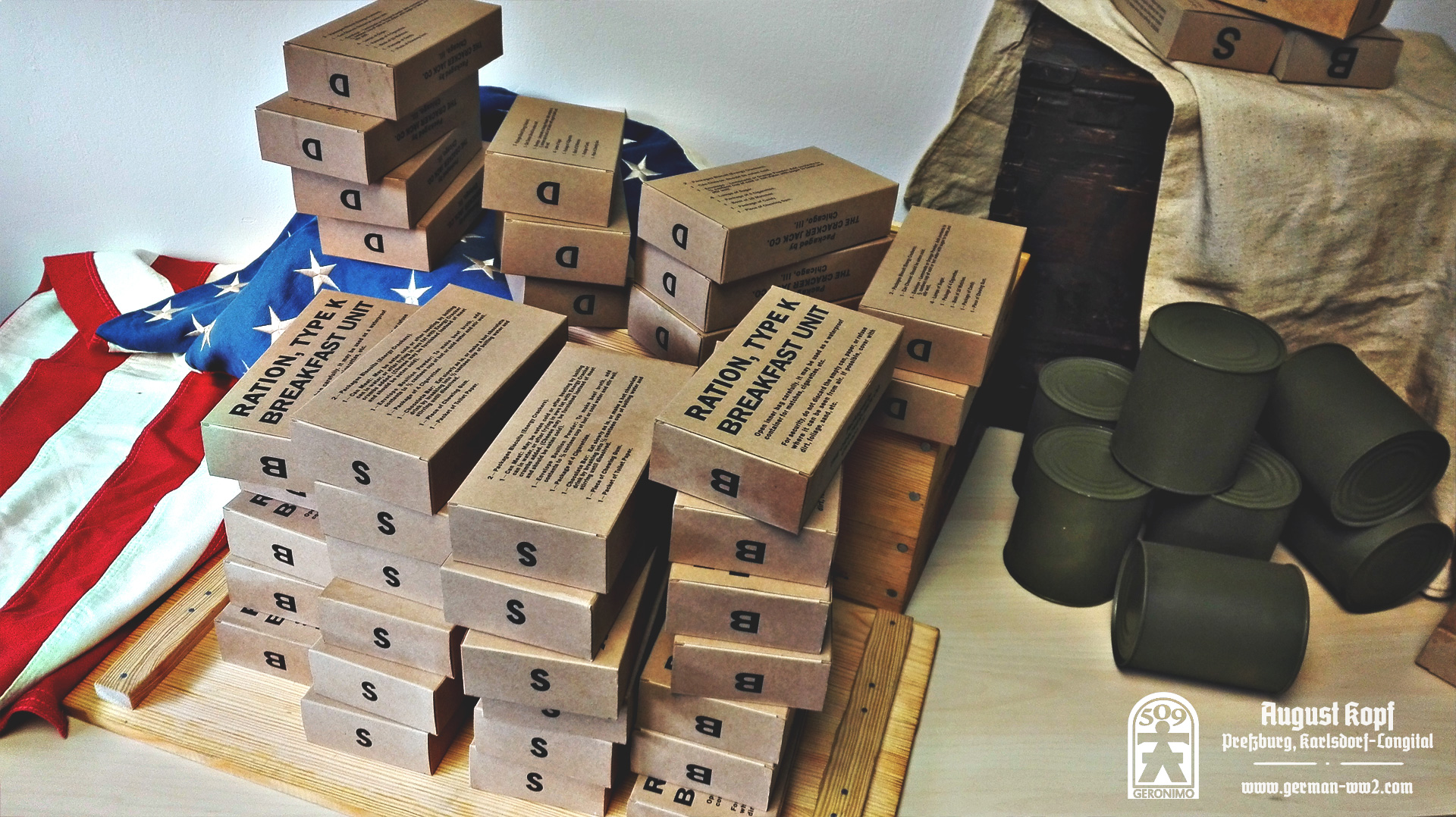
One does not simply find a good reproduction of K rations with actual edible content and that’s why we started to work on our own production. This journey started about 10 years ago and developed slowly into today’s stage, when we are able to offer top notch quality for a more than reasonable price, what was and still is our primary goal – to offer reenactors historically as correct rations as possible for an affordable price. We believe this is how we can contribute to the serious scene of reenactors who want to be as era correct as possible in each and every aspect of this hobby, while such reenactors fully understand, that it’s not only about a proper uniform or a good gear, but it’s also about the food you eat and the overall impression you give to other reenactors around you and therefore benefits your own feeling you got out of an reenactment event. There are and probably always will be reenactors who do not care about proper rations and rather eat normal modern stuff, but let’s give them the option, that might inspire them to go that extra mile and improve their attitude. These rows might seem quite uppish, but let’s break it down to details, to show you why we use such self-confident statements.
First let’s make a small benchmark, there are probably two or three sellers (e-shops) in Europe where you can get a K ration with edible content and their price is 20 euro per box, so a daily ration costs 60 euro, let’s be honest, that’s not a fortune, but if you want to eat them for a couple of days, it might become a bit unpleasant for your purse. Beside these providers you can buy empty K ration boxes in several e-shops or also complete sets of packaging materials from a site focused exclusively on rations. These empty boxes are great for display’s, but when you want to fill them with proper and era correct content, you really need a lot of time for research, at least a pair of skilled hands and another pile of hours for actual manufacturing – it’s not rocket science, but if you want to be serious with your repros, it will take time, money and nerves to reach an acceptable level. We’ve been able to set our price at 39 euro for a full day K-ration set (consists of 3 boxes – breakfast, dinner, supper), so in numbers we are 35% cheaper than the market average. You might wonder now, if our quality is not inferior then, so let us tell you a story about that too.
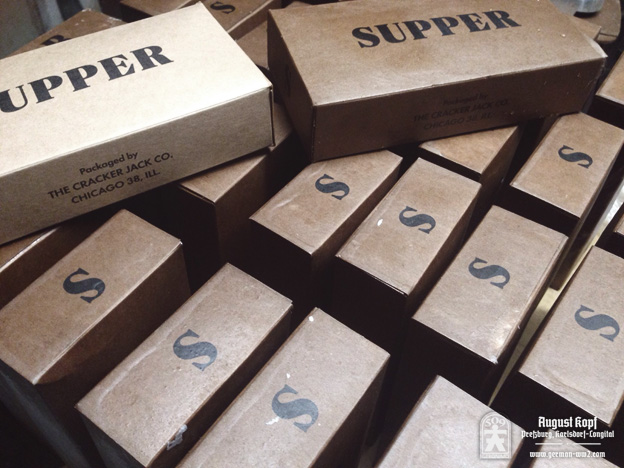
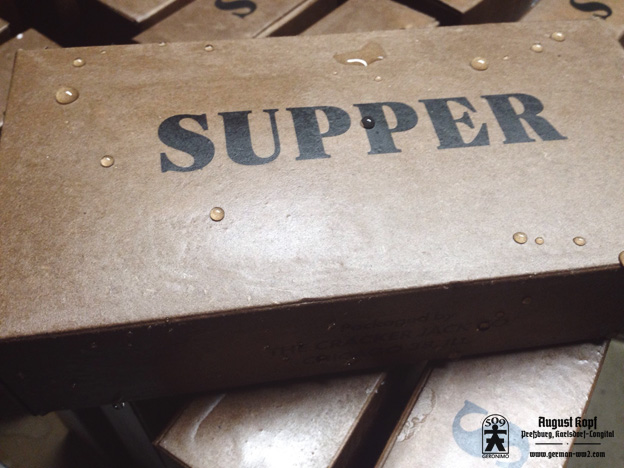
Second important part is the quality. You can buy cheap stuff, but often the quality kicks back and finally you realize that you’ve thrown your money out of the window. We can assure you, that it is not our case. We even dare to say, that our production has the best price vs quality ratio, at least in Europe – why we’re saying that? There are several reasons for that. First is obviously our above mentioned price, second is the focus on details. Details build up your impression and the same applies to the ration reproductions. It’s crucial to choose proper materials, procedures and content for your rations, naturally you cannot be 100% era correct or better to say not for a competitive price, but you can still be really close to the originals and still keeping your price quite low. Many of the current manufactures take shortcuts and skip some of the content or switch materials for some reason. The original wartime K ration consisted of an outer cardboard box and a wax dipped inner box, which protected the food inside – the outer box was unwaxed not to stick to each other in hot climate. Our rations are packed and sealed exactly this way, so the inner box is weatherproof, as supposed to be (note the drops of water on the surface of the inner box shown below).

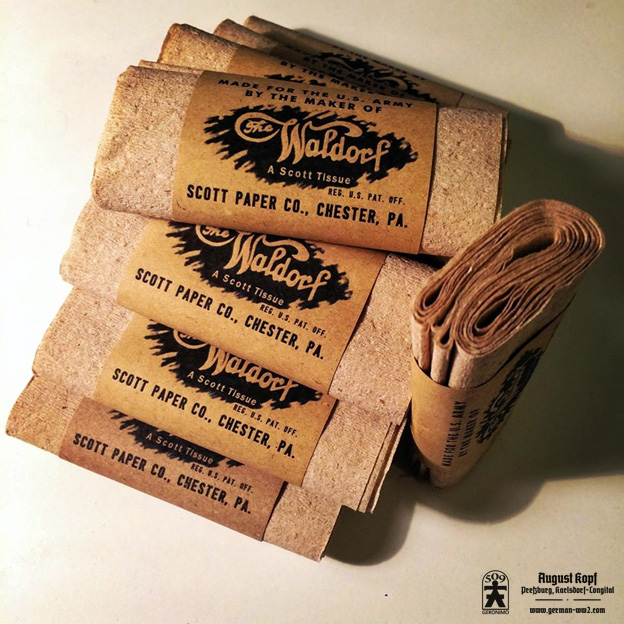
Inside you can find a canned meat product slid into a cardboard sleeve, this sleeve is often skipped by others, but we are making it, because that’s how it should be. The canned product itself isn’t era correct, because it is (probably) impossible to find ham and eggs or processed cheese in fitting cans, so we use various tuna or meat spread cans instead.
Next to the sleeve with the meat product is a piece of chewing gum (most of the war it was so as per the respective regulations – the flavor and smell of the gum could impact for example the biscuits if those would be packed together in the cellophane bag) and on the side of the box nicely sits a small 4-pack of cigarettes, era correct non-filter cigs. The other side of the box is filled by a heat sealed cellophane bag, which always some biscuits (also sealed in cellophane – the exact type vary based on the K ration type), 4 lumps of sugar (the very early versions had only 3 lumps) or granulated sugar, beverage, little wooden spoon, toilet tissues (unbleached paper should be used note below) and based on the type a specific piece of confection, could be a fruitbar, 2 OZ chocolate, snickers’s, charms candy etc.
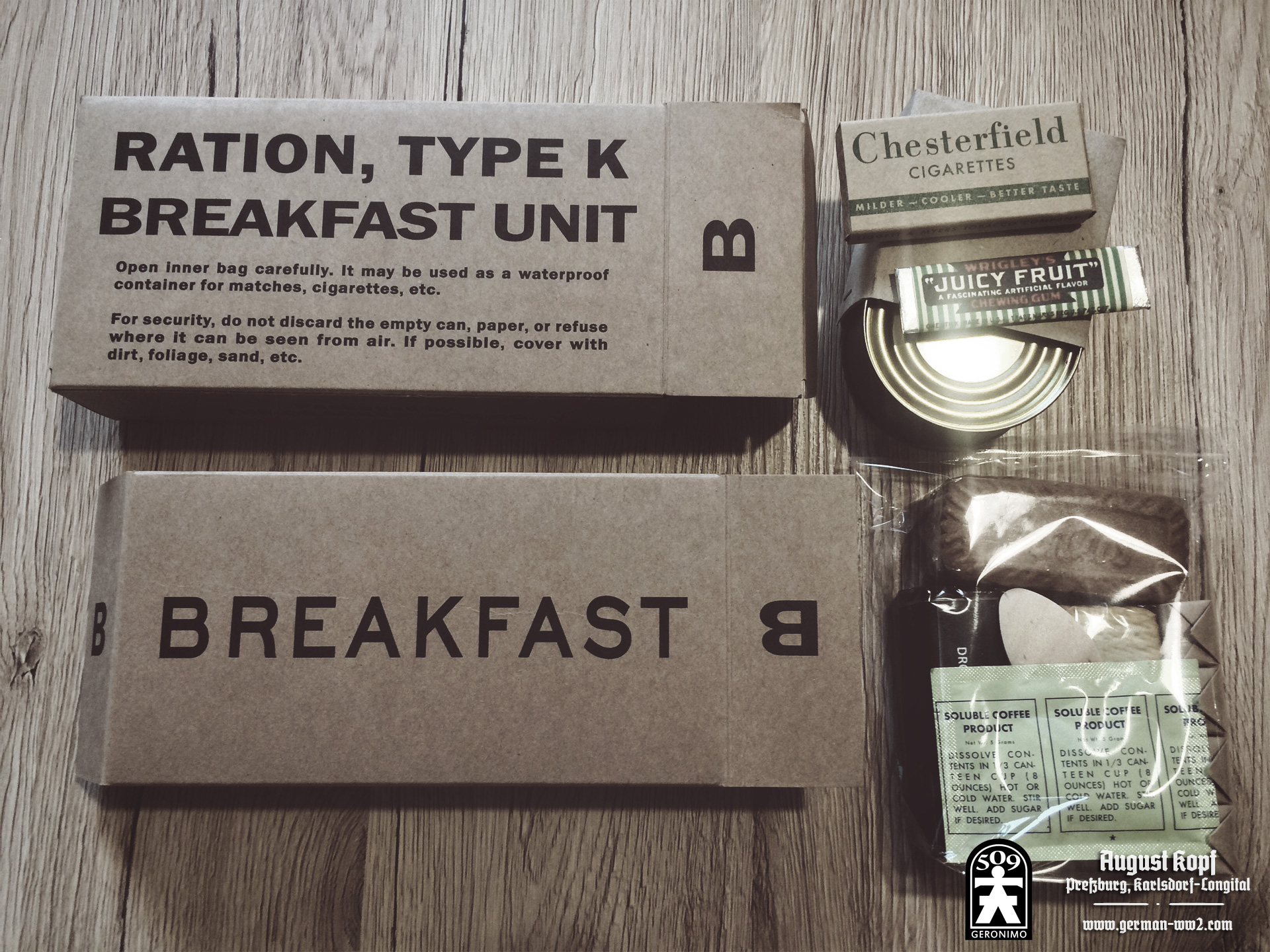
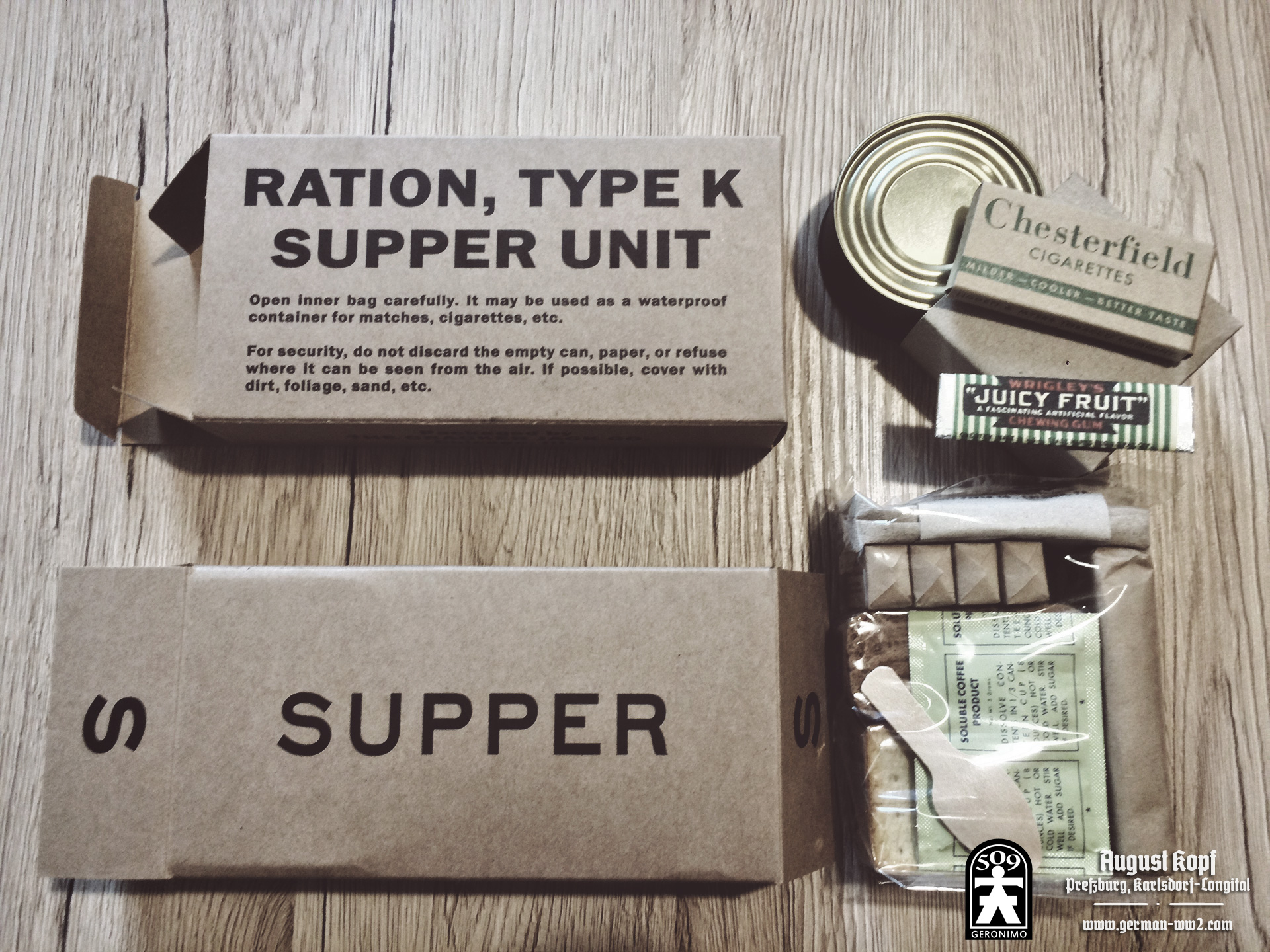
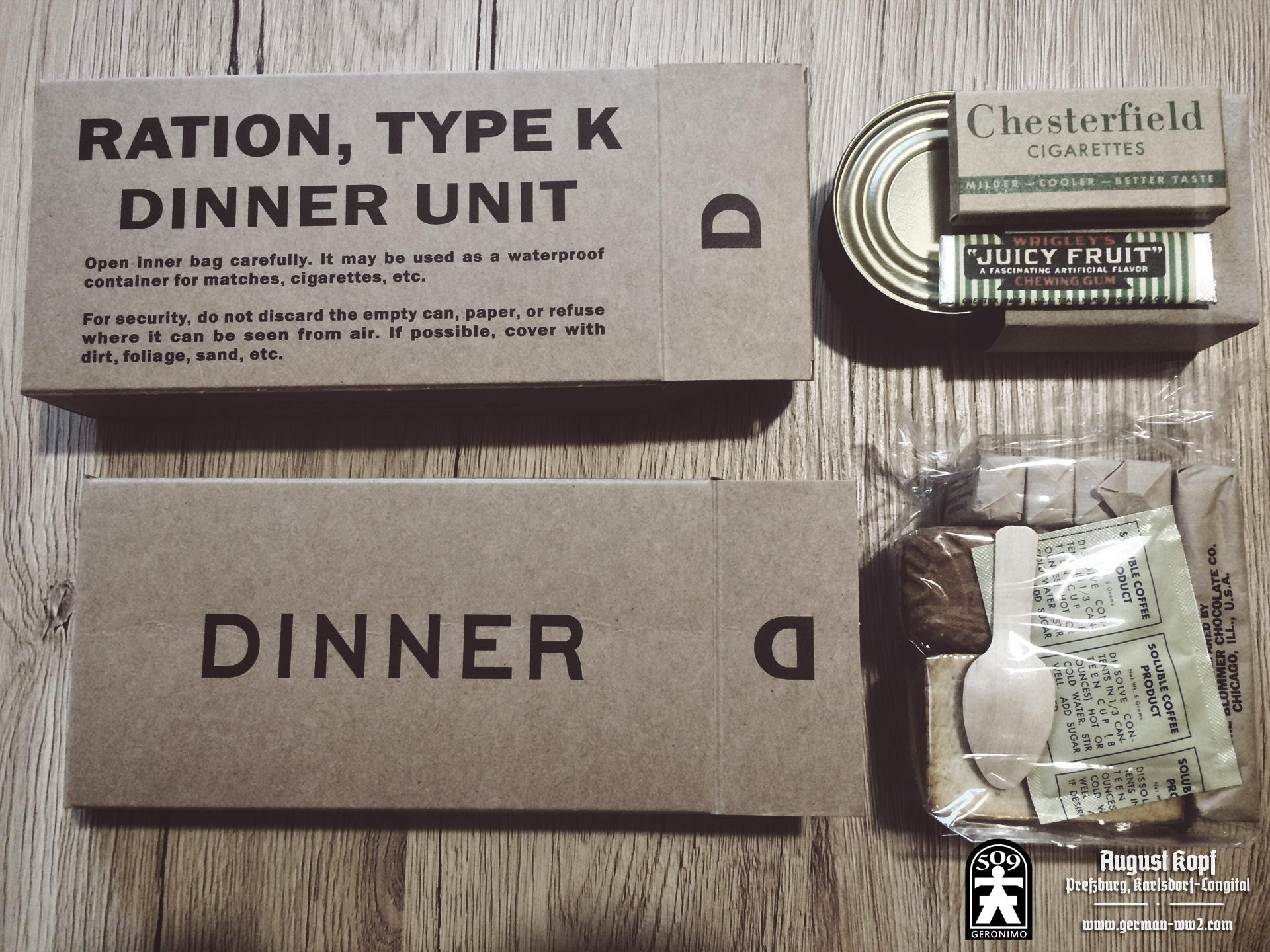
Cellophane is often switched for various nowadays plastic bags, because it is not easy to cut and work with cellophane. Actually, we haven’t seen anyone else using it to pack K ration biscuits or as the inner bag so far, but we consider such details to be very important, so we use cellophane to pack everything what is supposed to be packed or wrapped in it.
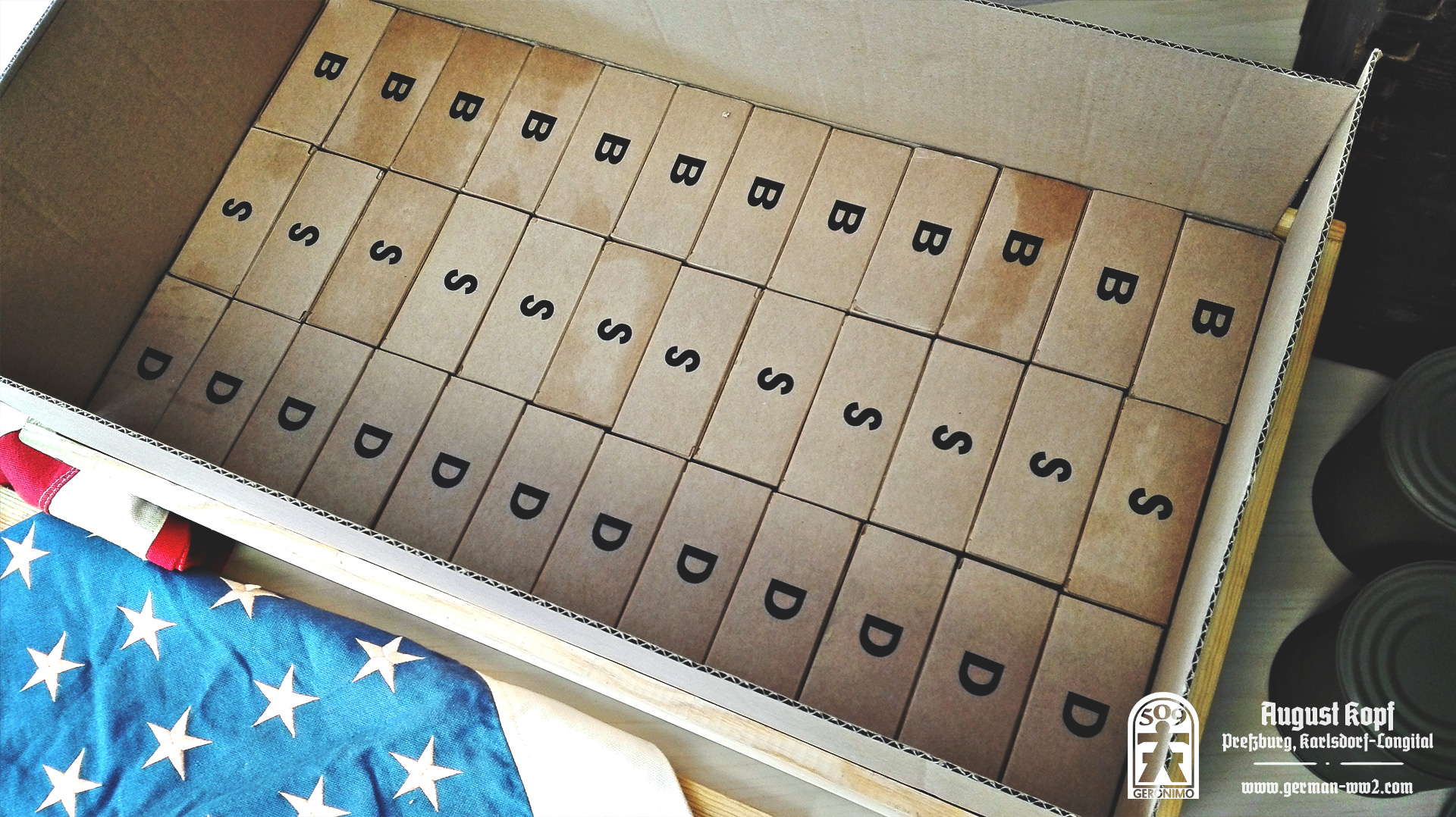

In conclusion, the best way to prove what we’re saying is to try out our rations and compare them to originals or other repro rations you might find on the market. There’s always room for improvement and be sure, we’re continuously working on it, someday we might be even able to can era correct food…
David
Geronimo Reproductions
Latest articles in blog
- [11. 02. 2024] Feldfu project - gen 4
- [30. 09. 2022] Feldfu project - the end is near
- [27. 07. 2022] Feldfu project - connection established!
- [21. 07. 2022] Feldfu project - introduction
- [02. 01. 2022] Tank Races 2022 Rules